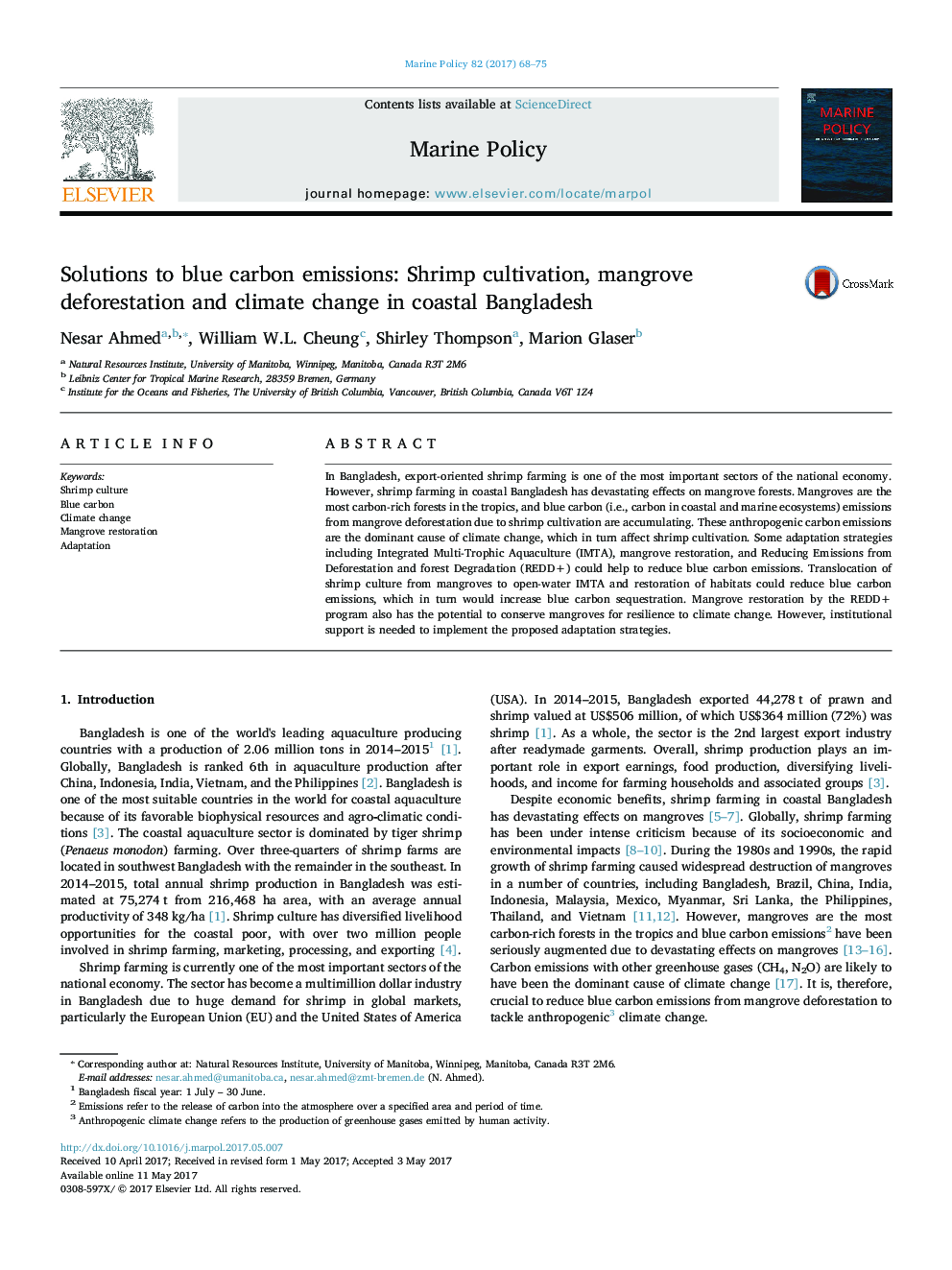| کد مقاله | کد نشریه | سال انتشار | مقاله انگلیسی | نسخه تمام متن |
|---|---|---|---|---|
| 5118263 | 1485497 | 2017 | 8 صفحه PDF | دانلود رایگان |
- Shrimp farming is one of the most important sectors in Bangladesh.
- However, shrimp farming has devastating effects on mangrove forests.
- Blue carbon emissions from mangrove deforestation causes climate change.
- Some adaptation strategies are proposed to reduce blue carbon emissions.
In Bangladesh, export-oriented shrimp farming is one of the most important sectors of the national economy. However, shrimp farming in coastal Bangladesh has devastating effects on mangrove forests. Mangroves are the most carbon-rich forests in the tropics, and blue carbon (i.e., carbon in coastal and marine ecosystems) emissions from mangrove deforestation due to shrimp cultivation are accumulating. These anthropogenic carbon emissions are the dominant cause of climate change, which in turn affect shrimp cultivation. Some adaptation strategies including Integrated Multi-Trophic Aquaculture (IMTA), mangrove restoration, and Reducing Emissions from Deforestation and forest Degradation (REDD+) could help to reduce blue carbon emissions. Translocation of shrimp culture from mangroves to open-water IMTA and restoration of habitats could reduce blue carbon emissions, which in turn would increase blue carbon sequestration. Mangrove restoration by the REDD+ program also has the potential to conserve mangroves for resilience to climate change. However, institutional support is needed to implement the proposed adaptation strategies.
Journal: Marine Policy - Volume 82, August 2017, Pages 68-75
